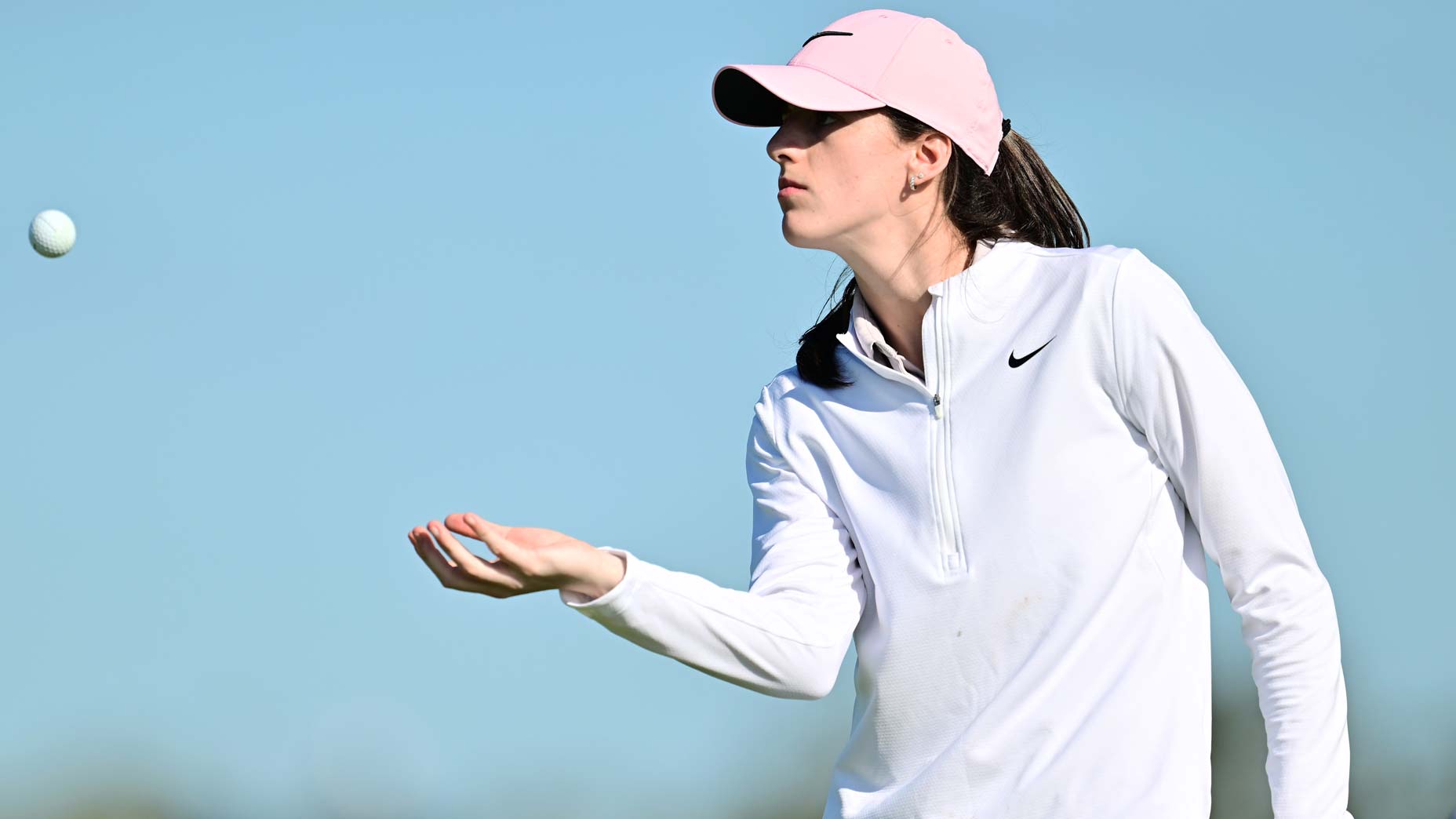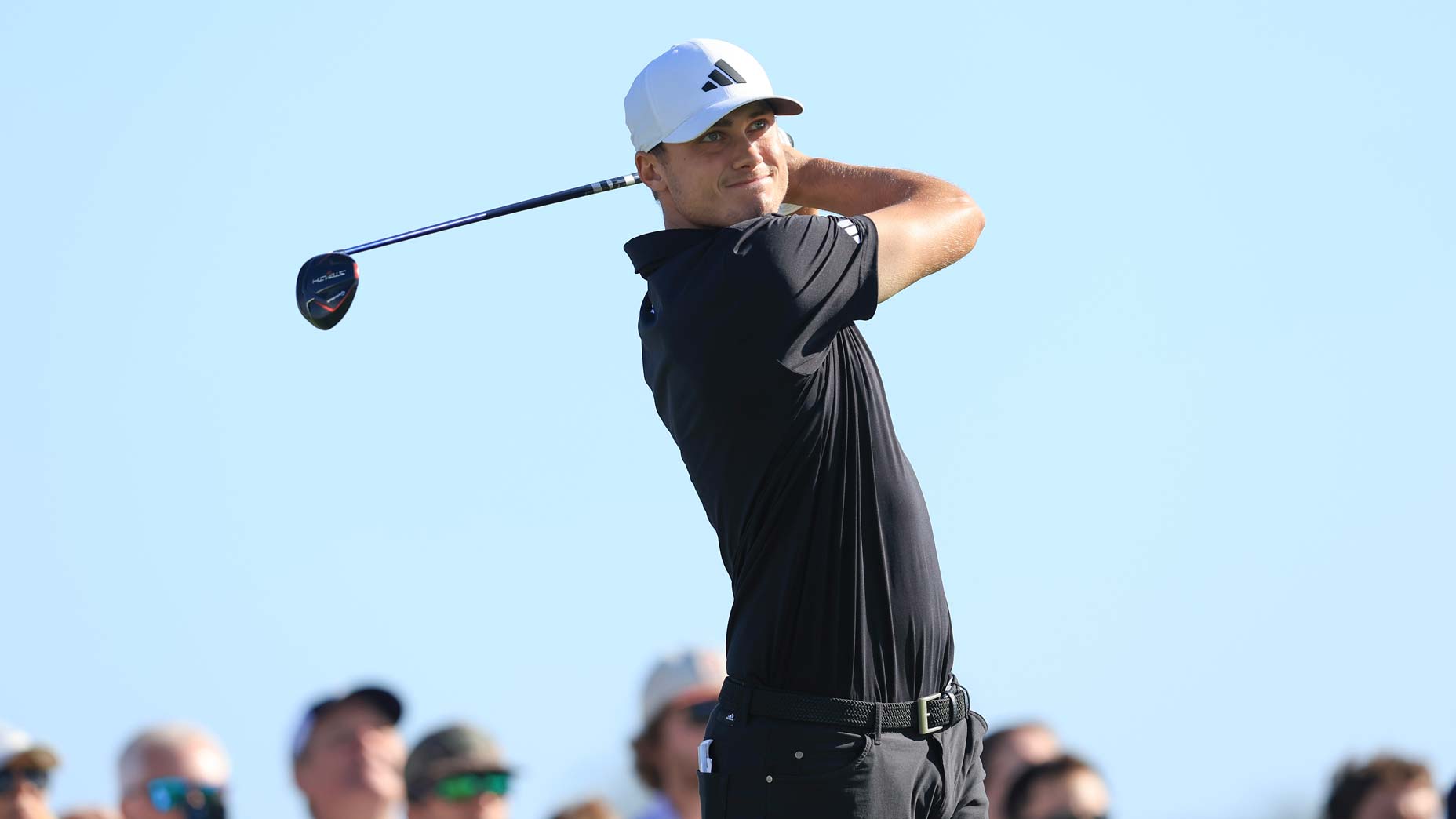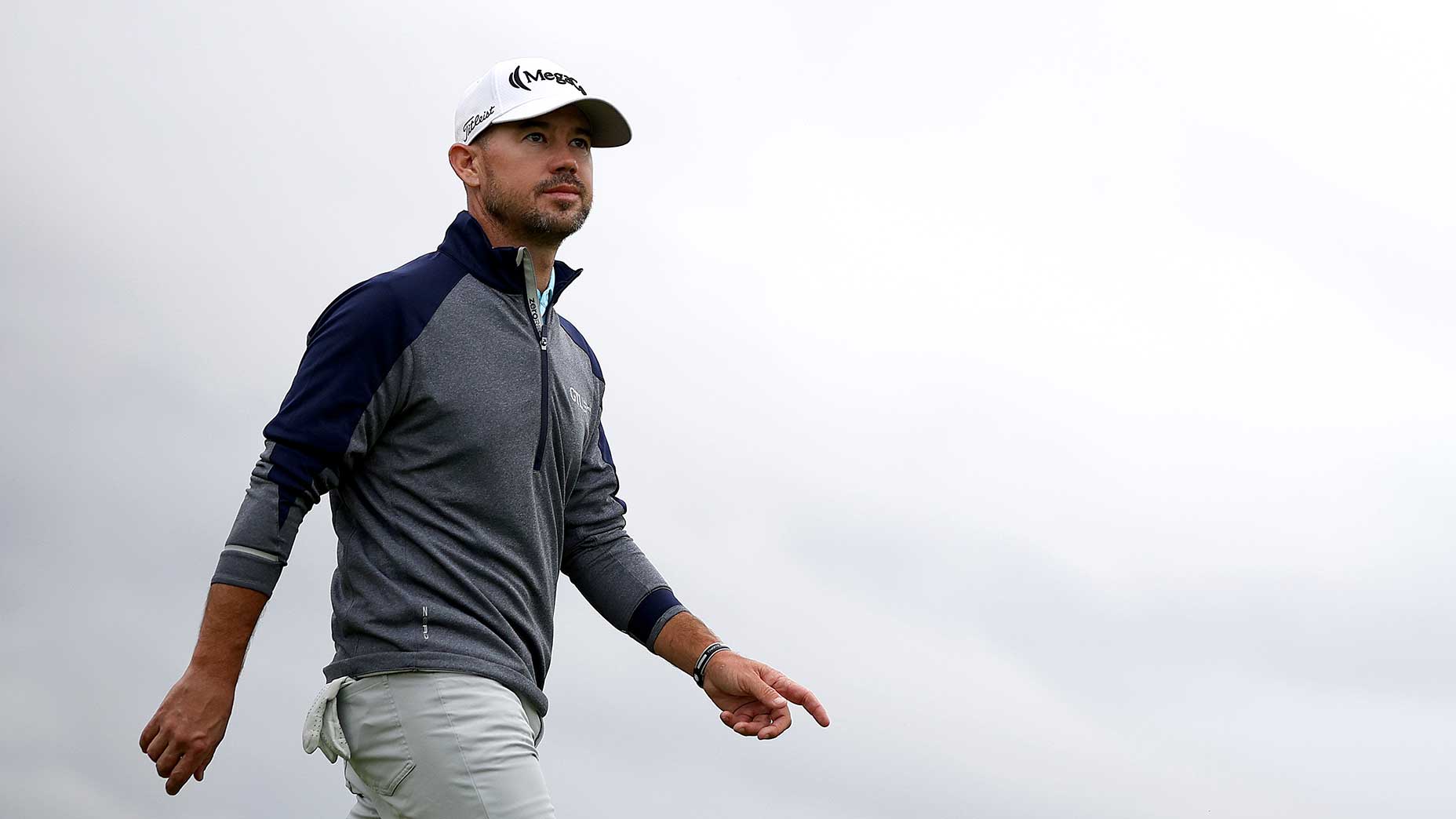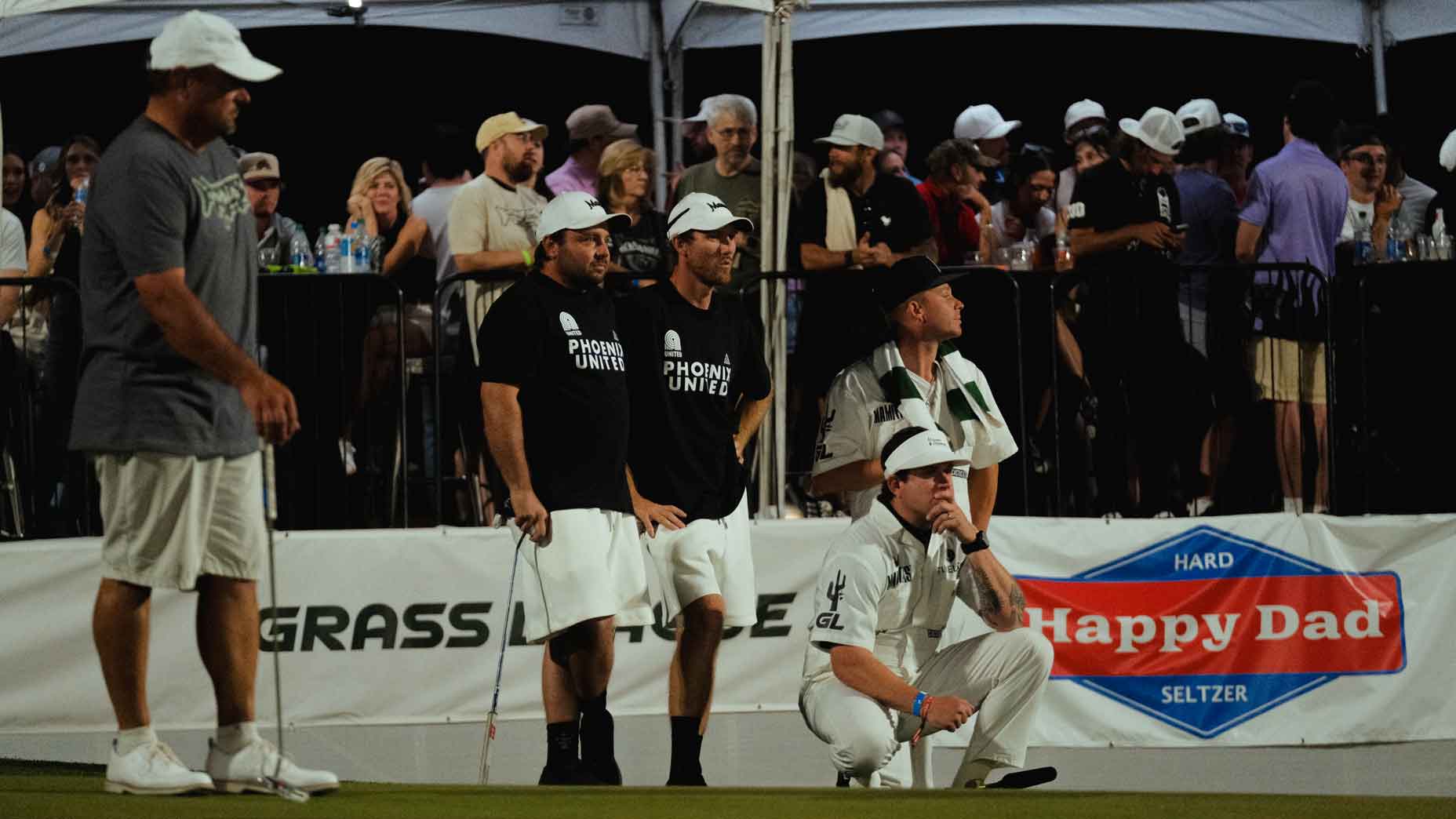 Report: Caitlin Clark to make surprise appearance at RSM Classic Pro-Am on Wednesday
Report: Caitlin Clark to make surprise appearance at RSM Classic Pro-Am on Wednesday
What’s a logo worth? Here’s why top professional golfers are in a financial league of their own
On the final day at the Wells Fargo Championship, Justin Rose was in the hunt at Quail Hollow. Playing in one of the last groups, the television cameras tracked every swing, but it also caught plenty of shots of his sponsor logos — on his hat, on his lapel and shirt, on his bag.
His three-under final round wasn’t enough to overtake the champion Max Homa. But for one of his lead sponsors, his third-place finish was as good as a win. For the entire Sunday broadcast, the “Morgan Stanley” printed across Rose’s hat got the financial services firm more coverage than its rival Wells Fargo, which shelled out a lot more money to be the event’s title sponsor.
“I quite enjoyed that,” said Mandell Crawley, head of private wealth management at Morgan Stanley, who championed the deal to sponsor Rose.
Such exposure is like the tagline from MasterCard, whose logo is stitched into Rose’s lapel: priceless. Except in this case, Rose’s hat goes for $5 million a year. Sponsorships are big money for top professionals and necessary income for less-well-known players. But for businesses, they’re investments that come with all sorts of expectations in return.
Fly around the world for a client tournament? Audemars Piguet asks that of top European golfers like Henrik Stenson, Tyrrell Hatton and Andrew “Beef ” Johnston. Be a cheery and positive dinner speaker to clients right after a grueling round at TPC Sawgrass, win or lose? That’s Rose’s job at the end of The Players Championship, which Morgan Stanley sponsors. Fix Charles Barkley’s swing? CDW, which adorns Paula Creamer’s hat, asked her to try that in an ad, but even a major champion can only do so much.
In the world of sponsorships, there’s give and take, just as there is in golf and business. “Money Game,” my new, monthly column, is going to look at this intersection between golf and all things financial, from business sponsorships and on-course networking to how players like you spend their golf money.
While the relationship between golf and money — like first tee shots and mulligans — can be complicated, it’s more positive than not. The top professional golfers are financially in a league of their own. They can command millions for prime placement and hundreds of thousands of dollars for a small logo and an agreement to attend a couple of client golf events. They can opt for what’s known as the “clean look,” a single sponsor like Nike or Under Armour to buy all the space on their body and bag. Or they can collect logos like trophies.
“Some players don’t mind looking like a NASCAR driver,” said Jay Burton, who oversees the LPGA client management for IMG globally.
Paula Creamer, who IMG represents, has been with the same core sponsors for most of her career: TaylorMade, CDW and Mutual of Omaha. Off the course, Creamer agrees to do ads and events.
“I’ll do corporate days, clinics, go out to the golf course for 18 holes,” she said before the LPGA Marathon Classic. “Now and again it’s dinner meetings, when they’ll have all of their customers there and I’ll come in and talk.”
What sponsors want differs. Audemars Piguet, the Swiss watchmaker, requires its players to wear its logo on the right side of their shirt. Francois-Henry Bennahmias, chief executive and a former nationally ranked French golfer, said it always wants that spot, to maximize television coverage. But it does not use any of its players in advertisements, preferring to use its golfers, including major champions like Darren Clarke and Danny Willett, for client events it hosts around the world.
“We get our ambassadors on site when they’re already playing a tournament somewhere and bring in usually 72 people from 15 or 20 different countries,” Bennahmias said. “We play for one day, but it’s a three-day event where clients get to interact with them.”
But sponsoring players is not only the realm of global companies. Sponsorship deals often start out as marriages of convenience: A company wants to sponsor someone for the branding opportunity and the corporate golf, and golf agents have a list of players at all different price points.
ADVERTISEMENT
Justin Marcus, chief operating officer at Princeton Information, a family-owned information technology company, pushed the company to sponsor a player a decade ago. “A buddy brought a golf agent to play golf with me at Bayonne [Golf Club],” he recalled. “We hit it off. It was around 2008 and he said, ‘There are some good deals going on, and these guys are flexible.’”
After looking at an array of players, ranging from Nationwiders to Jim Furyk, Marcus said the company picked John Senden, the hard-hitting Australian.
“I could have gotten a guy no one had ever heard of for $5,000,” Marcus said. The company paid about $60,000 to sponsor Senden and get its logo on his right breast pocket. Marcus said the decade-long relationship — in which Senden would come to several client events to play and talk — has been great: “He does a little homework on the guys he’s playing with,” he said. “He’s been awesome.”
Its sponsorship, which ended when the company was recently sold, also helped bring employees together, which Marcus said he hadn’t expected.
For brand-sensitive businesses, there can be conflict. Think of the Tiger Woods commercials for TaylorMade, where Woods is in Nike gear. Or Rose doing Morgan Stanley commercials with his MasterCard logo in the shot. Burton recalled a time when Creamer was doing a photo shoot for then-sponsor Citizen Watches, which asked that she not wear her golf apparel with its Adidas and CDW logos.
“Contractually we couldn’t do that,” he said. “If you’re sponsored by Adidas you can’t be wearing a shirt that says ‘Citizen Watch’ just because they want their athlete to wear their shirt.”
It works both ways, though. Sometimes companies will grab any piece of real estate on a pro to get their logo in someone else’s ad.
Crawley said Morgan Stanley has been pleased with its sponsorship of Rose. While it’s hard to quantify the return on a hat, he said internally it’s been a huge step up from their previous placement on Rose: the back of his shirt.
“Everyone was on me because you couldn’t see it unless you got the perfect shot,” Crawley said. “You don’t get better, more visible real estate than the front of the hat. We figured if we’re going to do it we’re going to do it the right way.”
Paul Sullivan is a longtime business columnist for the New York Times and the author of Clutch: Why Some People Excel Under Pressure and Others Don’t.
To receive GOLF’s all-new newsletters, subscribe for free here.
ADVERTISEMENT





